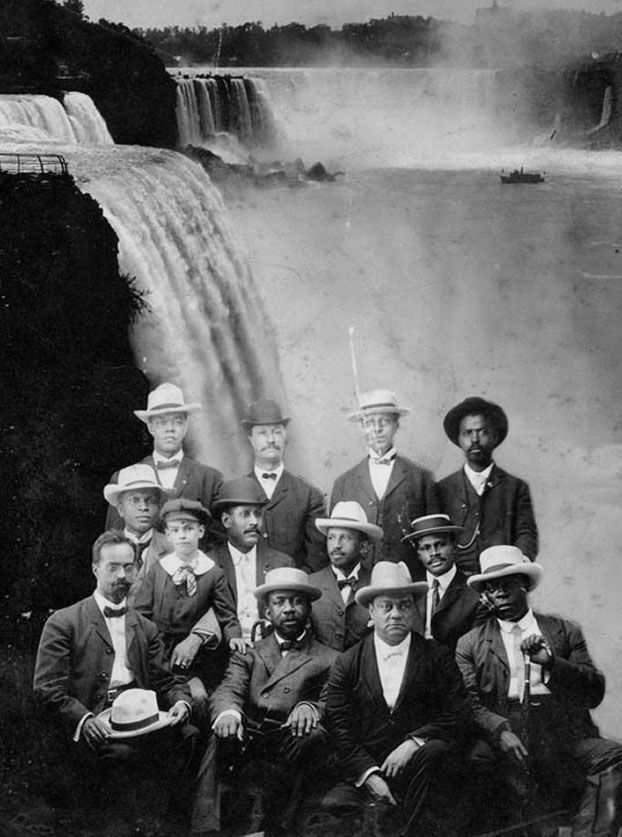
The Niagara Movement
The Niagara Movement formed in 1905 when a group of African American men met near Niagara Falls, Ontario to organize for civil rights.
One of the great natural wonders of the world, Niagara Falls is comprised of three waterfalls situated on the international border between the state of New York and the province of Ontario, Canada. Niagara Falls has long inspired artists, writers, daredevils, abolitionists and freedom seekers on the Underground Railroad, honeymooners, and tourists from all over the world. In the early twentieth century, the Falls also inspired a civil rights organization known as the Niagara Movement.
In 1905, scholar-activist W.E.B. Du Bois, activist William Monroe Trotter, and 30 other African American men attended a secret meeting on the necessity of equal rights for Black men, including an immediate end to violence and lynching, legal segregation, and voter disenfranchisement.
The meeting was held at the Talbert home in Buffalo, NY. William H. Talbert was a wealthy businessman and correspondent of Du Bois. Mary B. Talbert was a prominent civil rights and anti-lynching activist. The couple lived next to the Michigan Avenue Baptist Church, which used to be a stop on the Underground Railroad.
In fact, Buffalo was chosen partly “because it was a place associated with the struggle for freedom from slavery. Western New York was remembered as a major crossing point on the Underground Railroad for [freedom seekers] headed to safety in Canada.”
That same year, Du Bois and Trotter welcomed 29 Black businessmen for a conference at the Erie Beach Hotel on the Canadian side of Niagara Falls. For four days, Black intellectuals, writers, newspapermen, and activists established their civil rights platform…and the Niagara Movement was born. “The name […] allegedly came from the location of the meeting, along with the ‘mighty current’ of protest they wished to unleash.”
Canada was another symbolic meeting place. The country had been a safe haven for freedom seekers, many of whom settled in Erie Beach, Ontario. Additionally, the legendary waterfalls “attracted political activists of every persuasion. This was the ideal place from which to issue press releases and pose for pictures, to make a statement and be heard, as well as seen, around the world.” A 1905 photograph actually features Niagara Movement founders superimposed over an image of Niagara Falls.
In 1906, Black women were granted full and equal membership in the Niagara Movement. Prominent members included Ida B. Wells-Barnett, the famed anti-lynching activist, and Carrie Clifford, a civil rights and women’s rights activist.
Together, Niagara Movement members “called for the immediate end of segregation and full civil and political rights for African Americans.” Although the Niagara Movement disbanded after four years, its ‘mighty current’ cleared the way for the formation of the NAACP in 1909 and the modern civil rights movement.
Hope L. Russell, Ph.D.

